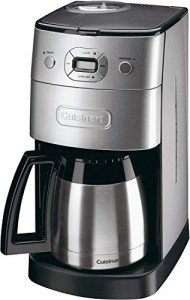A Comprehensive Guide to Espresso Machines: Types, Features, and FAQs
Espresso machines have actually ended up being a staple in coffee culture, mesmerizing both lovers and casual drinkers alike. As the need for high-quality coffee boosts, understanding the variety of espresso machines offered and their functions ends up being crucial. This short article intends to provide an in-depth expedition of espresso machines, covering their types, performances, and what to think about when purchasing one.
Kinds Of Espresso Machines
Espresso machines been available in numerous designs, each with distinct features, benefits, and compatibility with various brewing techniques. Listed below, we go over the primary types of espresso machines readily available on the marketplace:
| Type | Description | Target User |
|---|---|---|
| Handbook Espresso Machines | These require the user to physically operate the machine, offering complete control over the developing process. | Coffee perfectionists and enthusiasts |
| Semi-Automatic Machines | These machines automate the water pressure but need manual input for developing time. | Intermediate users |
| Completely Automatic Machines | These machines do everything automatically, from grinding the beans to brewing the coffee. | Busy experts |
| Super-Automatic Machines | These machines are totally automated and can produce different coffee beverages with minimal user intervention. | Users seeking benefit |
| Capsule Espresso Machines | These make use of pre-packaged coffee capsules to simplify the brewing procedure. | Casual drinkers |
| Business Espresso Machines | Heavy-duty machines created for high-volume usage, normally found in coffee shops and restaurants. | Coffeehouse owners and enthusiasts |
1. Manual Espresso Machines
Manual espresso machines use unmatched customization for coffee fans who appreciate the art of brewing. Users need to practice techniques such as tamping and pump pressure to develop the perfect shot of espresso.
2. Semi-Automatic Machines
These machines strike a balance in between user control and automation. They automate water circulation however require the barista to control the developing time. Semi-automatics are popular amongst home baristas who wish to develop their abilities without the complexity of totally manual machines.
3. Totally Automatic Machines
Totally automatic machines get rid of much of the guesswork involved in developing. They grind, dosage, and extract espresso with one touch of a button, making them ideal for users who value speed and consistency.
4. Super-Automatic Machines
Super-automatic machines take benefit to the next level. They can prepare a remarkable selection of beverages, from espresso to cappuccino, with little to no user input, making them ideal for busy families or offices.
5. Pill Espresso Machines
Pill machines, such as those from Nespresso or Keurig, utilize pre-packaged pods that streamline the developing procedure. While they provide convenience, the variety of taste and freshness may be restricted compared to whole coffee beans.
6. Industrial Espresso Machines
Created for heavy usage, business machines are constructed to produce high-quality espresso rapidly and consistently. They typically include advanced technology like multi-boiler systems and integrated grinders.
Features to Consider When Choosing an Espresso Machine
When picking an espresso machine, buyers should think about several essential factors, as these will significantly affect the total developing experience and the quality of the coffee produced. Here are essential features to examine:
Boiler Type
- Single Boiler: Good for those who brew mostly espresso.
- Dual Boiler: Allows for brewing espresso and steaming milk all at once.
- Heat Exchanger: Provides high pressure for espresso while enabling steaming.
Grinder
- Integrated Grinder: Offers convenience with built-in options for grinding coffee.
- Different Grinder: Provides versatility and the alternative to select the grinder best suited to your tastes.
Portafilter Size
- Requirement: Usually 58mm, fits most machines and offers excellent extraction.
- Smaller Sized Sizes: Often found in lower-end machines, which might affect taste.
Reduce of Use
- User-Friendly Controls: Essential for novices or hectic people.
- Personalization Features: Important for enthusiasts who choose hands-on brewing.
Cleaning and Maintenance
- Removable Parts: Facilitate easy cleaning.
- Automatic Cleaning Systems: Helpful for preserving the machine's performance.
Size and Design
- Counter Space: Ensure the machine will suit your kitchen area.
- Visual Appeal: Consider the machine's overall design to match your cooking area decoration.
Frequently Asked Questions about Espresso Machines
What is the difference in between espresso and routine coffee?
Espresso is brewed by requiring hot water through finely-ground coffee under pressure, resulting in a concentrated shot with an abundant flavor and crema. Routine coffee is generally brewed utilizing techniques like drip or pour-over, which utilize bigger coffee premises and produce a lighter taste.
How do I preserve my espresso machine?
Routine maintenance involves descaling the machine, cleaning up the portafilter and group head, clearing the drip tray, and replacing any water filters. Automatic machines typically have integrated cleaning programs.
Can I use routine coffee beans in an espresso machine?
While you can technically utilize routine coffee beans, espresso is best made with beans specifically roasted for espresso. These beans are typically darker and more oily, providing the rich flavor and strong aroma that espresso is understood for.
How can I enhance my espresso-making abilities?
Practice is key! Try out various grinds, tamping techniques, and extraction times. Consider using a scale to measure coffee and water specifically. Watching tutorials online can also offer insights into innovative strategies.
What is the typical cost range for a great espresso machine?
Prices can vary substantially based on type and features. Fundamental manual machines begin around ₤ 100, while high-end super-automatic machines can cost over ₤ 2,000. Large Capacity Coffee Makers -automatic machines normally vary from ₤ 300 to ₤ 1,500.
Espresso machines use a broad spectrum of options, each dealing with various choices, experiences, and budgets. Knowing the varieties readily available and the necessary features can assist consumers make informed decisions that cause tasty, café-quality espresso in the convenience of their homes. Whether one seeks to delight in rich tastes or needs a convenient brewing service, an espresso machine can elevate the coffee experience beyond the everyday cup.

